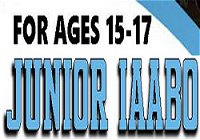NFHS 2025-26 Comments on the Rules...
4-6-1a & b (NEW): The definition of basket interference has been expanded to include situations in which a player slaps or strikes the backboard, causing the backboard or ring to vibrate, while the ball is in a scoring position. Specifically, if the ball is touching the backboard, located on or within the basket, or within the imaginary cylinder above the basket, such contact is now considered basket interference. This revision ensures that actions which may unfairly influence the outcome of a scoring attempt — by affecting the ball’s trajectory or stability of the basket — are penalized appropriately. Officials now have clearer guidance when adjudicating plays involving contact with the backboard during shot attempts. 4-22-1 & 2: The removal of offensive goaltending violations simplifies the enforcement of goaltending by eliminating the need for officials...
read more



